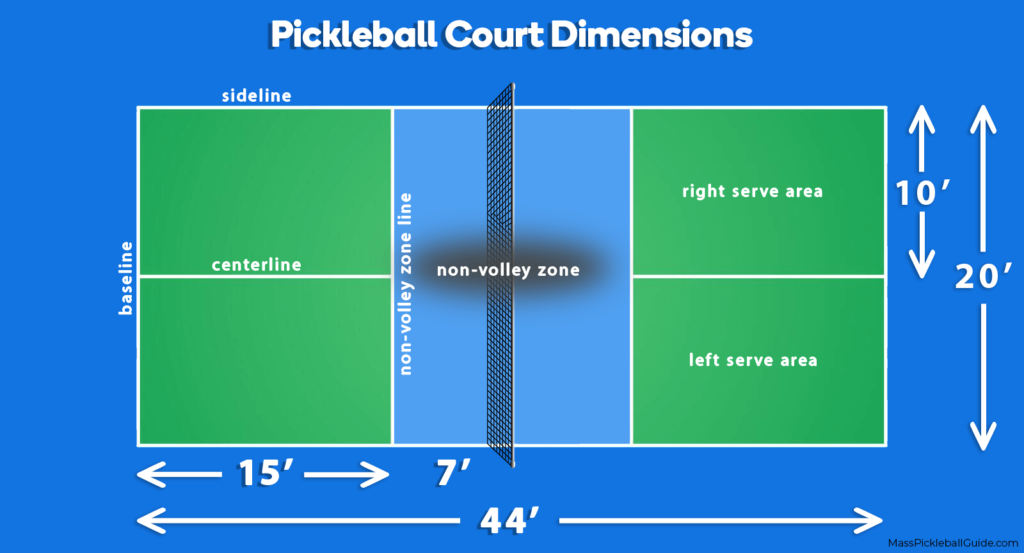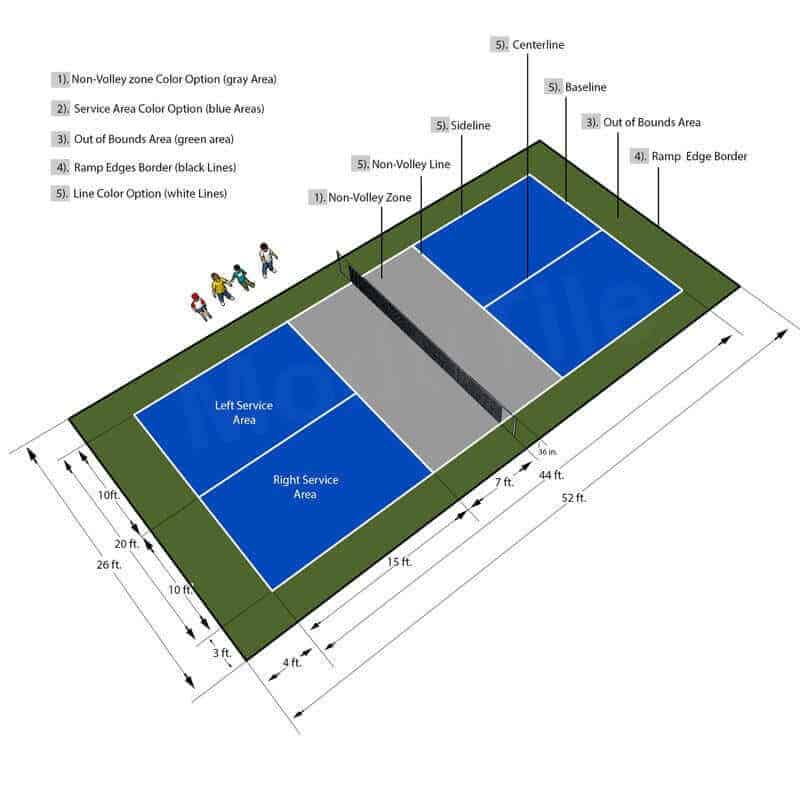Typical Mistakes to Avoid in Your Pickleball Court Construction Process
Boost Resident Engagement With Community-Driven Pickleball Court Projects
The introduction of community-driven pickleball court projects offers a special chance to promote neighborhood involvement and strengthen community ties. By actively including homeowners in the planning and implementation stages, such efforts not just create recreational areas but also promote a common feeling of possession. Comprehending the steps to launch these tasks, consisting of efficient stakeholder involvement and resource allocation, is critical. The actual inquiry continues to be: exactly how can these grassroots initiatives be tactically applied to make certain sustainability and inclusivity in diverse communities? Discovering successful study may offer the insights required to address this crucial problem.
Importance of Community Involvement
Community interaction is an essential component in the effective advancement of pickleball court jobs, as it fosters a sense of possession and cumulative obligation among homeowners. When area participants are actively involved in the preparation and execution stages, they are most likely to promote for the project's long-lasting success. Involving stakeholders such as regional gamers, family members, and leisure groups makes certain that the centers meet the diverse requirements and choices of the area.
Furthermore, neighborhood interaction cultivates a supportive environment where residents really feel equipped to add their ideas and resources. Pickleball court construction. This joint method can result in innovative options that enhance the design and performance of the courts, making them a lot more appealing to a bigger audience. Furthermore, including residents in decision-making processes can strengthen social ties, advertising inclusivity and unity within the neighborhood
The visibility of neighborhood support for a pickleball project can additionally play a critical function in safeguarding financing and approval from neighborhood authorities. By showing a shared dedication to recreational growth, communities can efficiently support for resources and plan adjustments that favor the facility of pickleball courts, inevitably enhancing the local culture and recreational landscape.
Steps to Launch a Job
Initiating a pickleball court project requires an organized strategy that develops on the foundation of neighborhood engagement developed in previous conversations. The primary step is to assemble a project committee making up local stakeholders, fanatics, and reps from pertinent organizations. This varied group makes sure that multiple viewpoints are thought about.
Following, perform a needs assessment within the neighborhood. Studies, focus teams, and public conferences can be efficient in assessing rate of interest and celebration input on prospective court areas, preferred amenities, and organizing preferences. Following this, create a job strategy outlining purposes, duties, and timelines.
Once the strategy remains in area, involve with neighborhood authorities to comprehend zoning regulations and any type of essential authorizations. Connecting transparently with the neighborhood throughout this procedure is critical, as it fosters trust and urges additional participation.
In addition, arranging area occasions can assist maintain momentum and interest. These events can act as platforms for additional discussion and help to enhance community ties. Finally, document every action taken and preserve thorough documents, as this will certainly be valuable for future phases of the task, including financing and resource procurement.
Funding and Resources Available
Safeguarding financing and sources for a pickleball court task is commonly a crucial step that can figure out the project's usefulness and success. Numerous avenues exist for obtaining monetary support, varying from public financing to private sponsorships. Neighborhood government gives, typically focused on advertising community health and wellness and leisure, can give their website significant sponsorship for such efforts.
In enhancement to government resources, not-for-profit companies and foundations frequently provide gives specifically for sports and neighborhood growth jobs. Engaging regional companies as enrollers can additionally be a worthwhile technique; many business aspire to spend in neighborhood initiatives that improve their corporate social responsibility account.
Crowdfunding systems have become a sensible alternative for grassroots fundraising, enabling community members to contribute directly to the project. This method not only raises funds however additionally cultivates a feeling of possession among participants.
Layout and Preparation Factors To Consider
Effective design and preparation are fundamental parts of any type of successful pickleball court project complying with the acquisition of financing and sources. A complete analysis of the proposed location is essential; this consists of assessing availability, proximity to existing area facilities, and the possibility for exposure and interaction.
The layout of the court need to adhere to main dimension specifications while taking into consideration the bordering atmosphere. Including functions such as seating, shade structures, and ideal lights can considerably improve player experience and spectator enjoyment. Products picked for the court surface Full Article need to prioritize toughness and security, with alternatives like acrylic or asphalt offering ideal performance.
Entailing area participants in the layout process cultivates a feeling of ownership and makes sure that the facility meets local requirements - Pickleball court construction. This can be accomplished through public assessments and surveys, permitting stakeholders to share their preferences and concerns
Sustainability should also be a priority; including green products and practices can contribute to lasting stability. Creating a maintenance plan to guarantee the court continues to be in exceptional problem will certainly support recurring community engagement and participation in pickleball tasks.

Success Stories and Situation Studies
Highlighting the transformative influence of community-driven campaigns, numerous success tales illustrate just how collective initiatives have actually led to the growth of lively pickleball courts throughout various areas. One notable example is the initiative in a village in Florida, where residents grouped to convert an underutilized tennis court right into a dedicated pickleball center. Via fundraising events and collaborations with local businesses, the community elevated adequate funds to install new nets, resurfacing, and lines, inevitably fostering a lively center for regional gamers.
Similarly, in a rural area of California, a grassroots movement arised to develop pickleball courts in a regional park. The job not only engaged volunteers for building and construction however also consisted of workshops to engage neighborhood members in the sport. Because of this, the courts ended up being a centerpiece for social communication and fitness, drawing in gamers of all ages.
These case researches exhibit how community-driven jobs can improve regional interaction, promote physical activity, and enhance social bonds. By leveraging collective sources and excitement, areas can effectively create and sustain pickleball facilities that serve varied populaces and foster a feeling of belonging.

Verdict
By prioritizing stakeholder involvement throughout the planning and implementation phases, these initiatives can successfully address diverse neighborhood why not find out more requirements. Ultimately, such efforts contribute to the change of public areas into vibrant facilities of fitness and social communication, strengthening area ties.
The emergence of community-driven pickleball court jobs provides an unique possibility to foster local engagement and enhance community connections.Neighborhood engagement is an essential component in the successful growth of pickleball court jobs, as it cultivates a feeling of ownership and cumulative obligation amongst citizens. When community participants are actively entailed in the preparation and execution stages, they are more most likely to promote for the project's long-lasting success.Launching a pickleball court job needs an organized strategy that builds on the structure of area engagement established in previous conversations. The project not just engaged volunteers for building and construction however also included workshops to involve area participants in the sport.